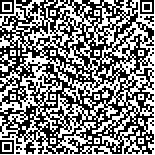| 李燕娴,曾木圣,麦海强.放射抗拒人鼻咽癌细胞系的建立及其抗拒机制的初步探讨[J].中国肿瘤,2013,22(5):390-396. |
| 放射抗拒人鼻咽癌细胞系的建立及其抗拒机制的初步探讨 |
| Establishment of Radioresistant Nasopharyngeal Carcinoma Cell Lines and Preliminary Discussion of Their Radioresistance Mechanism |
| 投稿时间:2013-01-30 |
| DOI:10.11735/j.issn.1004-0242.2013.05.A201301030 |
|
 |
| 中文关键词: 鼻咽癌 放射抗拒性 细胞周期 SP细胞 |
| 英文关键词:nasopharyngeal carcinoma radioresistance cell cycle side population cells |
| 基金项目:广东省科技计划资助课题(2011B031800314) |
|
| 摘要点击次数: 1858 |
| 全文下载次数: 858 |
| 中文摘要: |
| 摘 要:[目的]建立放射抗拒人鼻咽癌细胞系模型并观察人鼻咽癌细胞经X射线反复照射后放射敏感性的变化及初步探讨其放射抗拒的机制。[方法]利用X射线对人鼻咽癌细胞HONE-1、SUNE2细胞系进行照射,采用剂量梯度法确定其亚致死照射剂量后,每次照射1次亚致死剂量,共照射5次或以上(HONE-1:6Gy×5次,SUNE2:4Gy×7次)。采用克隆形成实验等测定所得的HONE-1-IR、SUNE2-IR细胞系及其亲代细胞HONE-1、SUNE2的放射敏感性、细胞周期特征及SP细胞比例。[结果] 与亲代细胞HONE-1、SUNE2相比,HONE-1-IR、SUNE2-IR细胞的D0、Dq及SF2值均增大,HONE-1-IR细胞的放射抗拒性(D0)是HONE-1细胞的1.336倍,SUNE2-IR的D0值为SUNE2的1.094倍,表现出一定的放射抗拒性;HONE-1-IR、SUNE2-IR的S期细胞比例较其亲代细胞HONE-1、SUNE2明显增高(HONE-1-IR vs HONE-1:43.56% vs 23.08%,P=0.002;SUNE2-IR vs SUNE2:32.64% vs 19.20%,P=0.029),G2/M期细胞比例明显降低(HONE-1-IR vs HONE-1:13.65% vs 29.51%,P=0.002;SUNE2-IR vs SUNE2:10.25% vs 22.63%,P=0.026),而G0/G1期细胞比例则无明显差异(P=0.735,P=0.572);HONE-1-IR细胞的SP细胞比例较HONE-1细胞明显增高(3.96% vs 0.02%),而SUNE2-IR细胞与SUNE2细胞的SP细胞比例分别为0.27%、0.06%。[结论] 人鼻咽癌细胞株HONE-1、SUNE2经亚致死剂量X射线多次照射后而建立的后代细胞HONE-1-IR 、SUNE2-IR具有一定的放射抗拒性;HONE-1-IR、SUNE2-IR细胞显示出与亲代细胞不同的细胞周期特征,放射抗拒性也可能与SP细胞比例增高有关,值得进一步探讨。 |
| 英文摘要: |
| Abstract:[Purpose] To establish two stable radioresistant nasopharyngeal carcinoma (NPC) cell line models and to observe the variation of radiosensitivity with different dose of irradioation. [Methods] We first established two radioresistant subclone cell lines (HONE-1-IR and SUNE2-IR) derived from NPC parental cell lines (HONE-1 and SUNE2) by treating the cells with five rounds (or more than five rounds) of sublethal dose ionizing radiation. The radiosensitivity,cell cycle distribution and side population (SP) cells proportion of cloned cell sublines HONE-1-IR and SUNE2-IR,together with their parental HONE-1 and SUNE2 cells lines were measured by clone formation assay,etc.[Results] Comparing to the parental cells HONE-1 and SUNE2,HONE-1-IR and SUNE2-IR cells showed significant resistance to radiation. D0,Dq and SF2 values increased,with 1.336-fold increase in radioresistance HONE-1-IR cells and 1.094-fold increase in SUNE2-IR cells as regards to the D0. The radioresistant sublines also showed higher percentages of cells in S phase (HONE-1-IR vs HONE-1:43.56% vs 23.08%,P=0.002;SUNE2-IR vs SUNE2:32.64% vs 19.20%,P=0.029), but lower percentage in G2/M phases (HONE-1-IR vs HONE-1:13.65% vs 29.51%,P=0.002;SUNE2-IR vs SUNE2:10.25% vs 22.63%,P=0.026),and no difference existed in G0/G1 phases (P=0.735,P=0.572). The percentage of side population (SP) cells in HONE-1-IR was obviously higher than that in HONE-1(3.96% vs 0.02%). [Conclusions] After intermittent sublethal dose X-ray irradiation,cell lines HONE-1 and SUNE2 has been induced to be relatively radioresistant (HONE-1-IR and SUNE2-IR). HONE-1-IR and SUNE2-IR cells show an obviously different cell cycle distribution with their parental lines. The percentage of side population cells in HONE-1-IR might relate to its radioresistance,which is worth to further research. |
|
在线阅读
查看全文 查看/发表评论 下载PDF阅读器 |